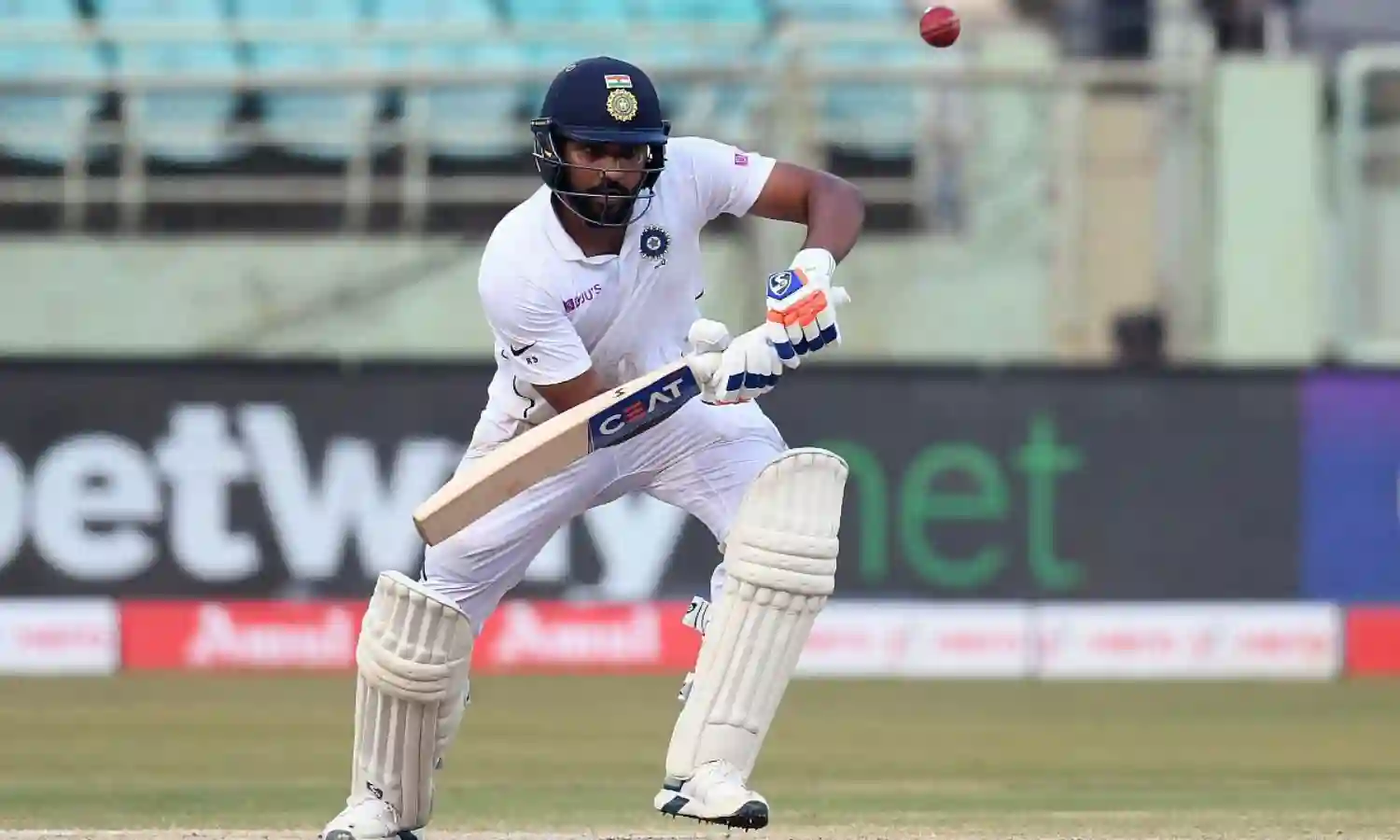Rohit Sharma Scripts His Own Destiny
It was opening that changed Sharma’s fortunes in ODIs

Before the start of the India-South Africa test series the Indian team management came out with a statement, that the ever elegant Rohit Sharma would be persisted with even if he failed a few times, given his calibre and potential as a test opener.
The call was supposedly based on his proven class in cricket’s shorter formats. And now, after Sharma managed to tick a century in both innings of a test, he’s saved the selectors from a few blushes, but more importantly, he has rediscovered himself.
When Sharma stroked debutant Senuram Muthusamy to deep cover on the first day of the Vizag test, to notch up his fourth test century, his celebrations were not too ecstatic. Just a look up to the sky with a sigh of relief and authority, a raise of the bat, and a neverending hug from his counterpart Mayank Agarwal.
It wouldn’t be wrong to say that Sharma desperately needed to see three digits in front of his name. Yes, the twin centuries were mighty important for him, in a lot of ways. The Vizag century will provide soothing balm to nine years of test match pains, which began against the same opponents in his home town of Nagpur in 2010.
In that tournament Sharma, who was being talked up as the next big thing after his exploits in the 2007 World T20 and 2008 CB triseries triumphs in South Africa and Australia, was included in the Test side. As fate would have it, a knee injury sustained just before the toss resulted in his omission in favour of Wriddhiman Saha.
That injury would put his test career back three years, the next opportunity coming only when Sachin Tendulkar announced his retirement. Sharma promptly paid tribute with two centuries back to back, but once he left Indian shores his technical frailities were exposed.
However, the right-hander was traversing a parallel path in his career. His test failures aside, in ODIs and T20s he became a bonafide great.
The turning point was the 2013 ICC Champions Trophy, when Sharma was promoted to regular ODI opener. The change up from the middle order gave Rohit Sharma a new direction in his cricketing career. Since being promoted he has been the leading run-getter in Twenty20 internationals and the leading six-hitter in ODIs and T20Is both.
It was opening that changed Sharma’s fortunes in ODIs. But in tests it was a different tale. Heading into Vizag, a lot of demons were running around in his head. His two-ball duck in the warm-up test as captain had not helped. There was a lot of split advice, with some suggesting he might have to curb his natural game, while others said he should play his natural game.
On game day, Sharma strode out with Agarwal. Many people expected him to be like Virender Sehwag, while others believed he might not last out a Kagiso Rabada or Vernon Philander spell.
In some respects he followed Sehwag’s mantra of ‘See ball, hit ball’ perfectly. His four off Rabada to get off the mark symbolised this. At the other end, though beaten a couple of times by Philander’s swing, he hung in and did not get flustered and play a loose shot. In the context of his career, having survived the first hour, that too at the top, was a massive psychological boost.
In the first session he left balls outside off with discipline and played himself in. It was in the second session that the ODI and T20 spirit took over. Every bad delivery was simply punished. He showcased his Sehwag-like fearlessness by galloping towards his century with two consecutive sixes off Dane Piedt. When he reached his century and was leaving the field for tea, the standing ovation and the grin Virat Kohli had on his face highlighted the importance of it.
Having repeated his first-innings heroics in the second, Sharma has shut down critics who were questioning his fitness. Looking ahead, it wouldn’t be wrong to say that his ideas, coupled with Kohli’s leadership, will definitely help the Indian team rise above the others in the course of the World Test Championship.
Vizag is known as the City of Destiny, and here Rohit Sharma has certainly scripted one for his own. It is said that things which are meant to happen, will happen. That cliché carries a lot of importance. What lies ahead for him remains to be seen, so for now let’s just cherish this great man, who is in some unbelievable form.



